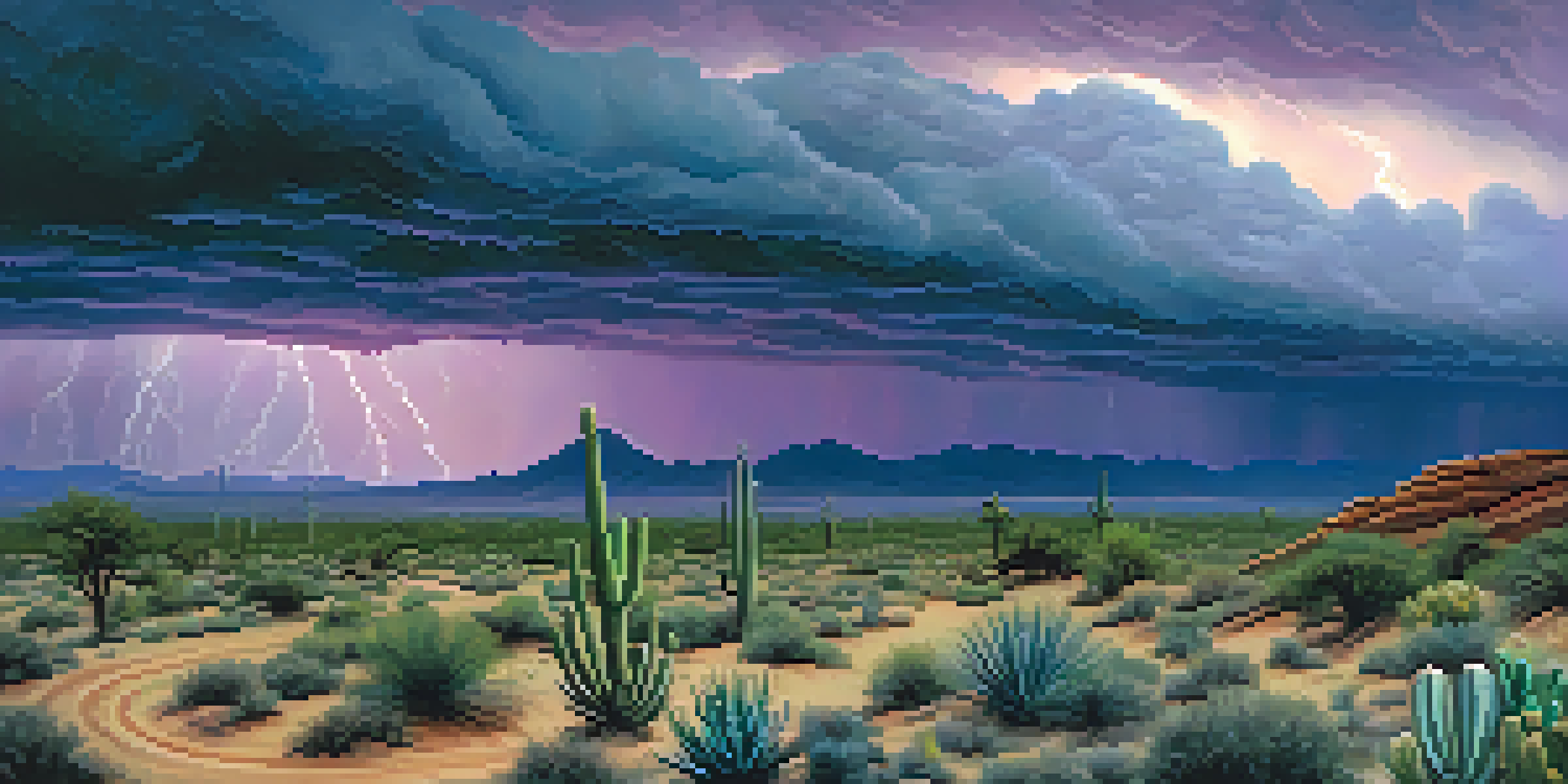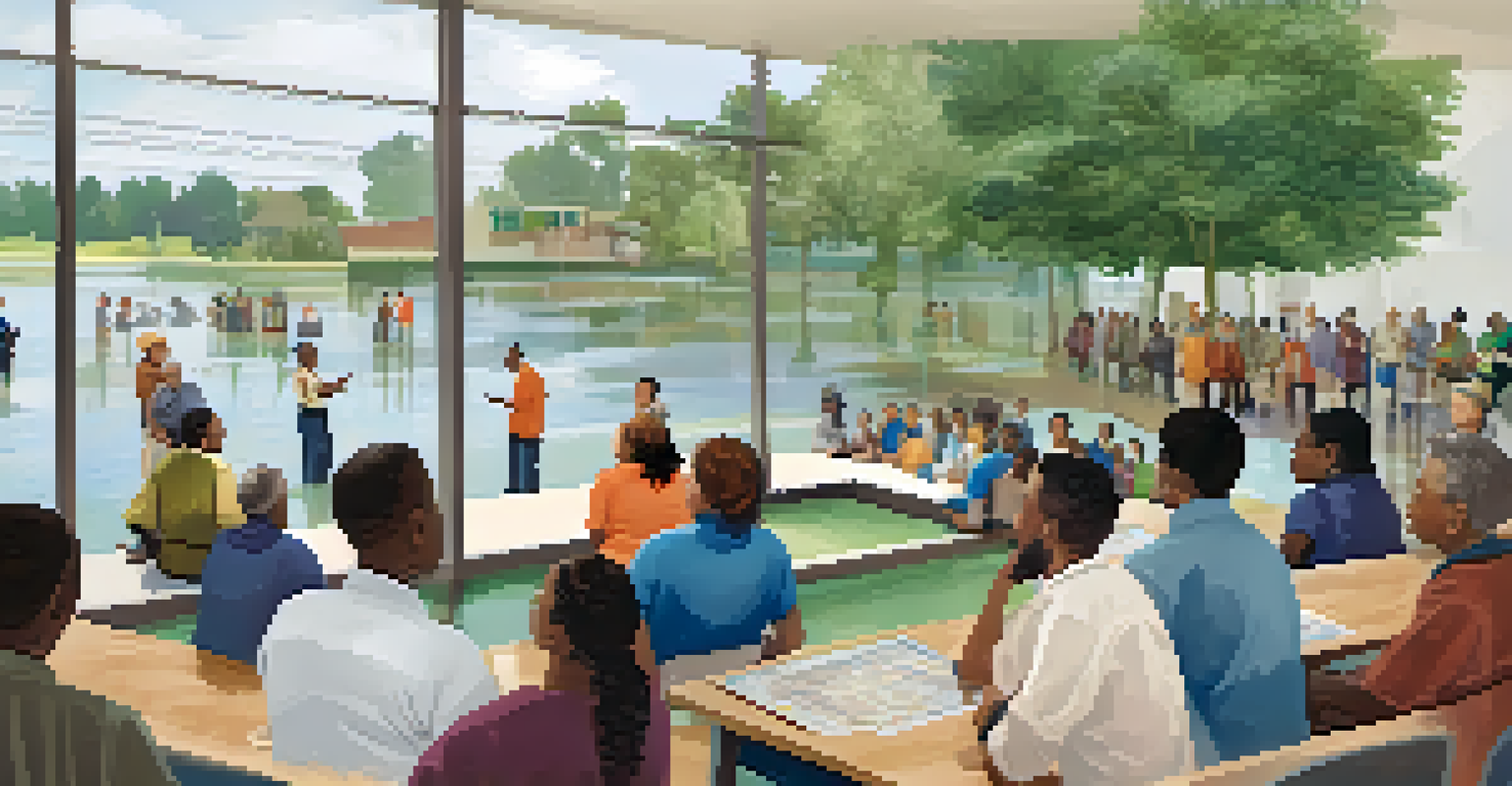Understanding Flood Risks and Preparedness in Phoenix

Overview of Flood Risks in Phoenix
Phoenix, known for its desert climate, might seem unlikely to face flooding. However, the city is prone to sudden flash floods, especially during monsoon season. The combination of heavy rainfall and the region's unique topography can lead to rapid water accumulation in streets and low-lying areas, creating dangerous conditions.
By failing to prepare, you are preparing to fail.
Understanding where floods are likely to occur is crucial. Areas near rivers, washes, and those with poor drainage systems are particularly vulnerable. Even neighborhoods that seem safe can be at risk during extreme weather events, so it's important to stay informed about local flood zones.
Being aware of flood risks helps residents prepare adequately. This knowledge fosters a proactive approach to safety, allowing individuals and families to create plans and gather necessary resources well before the storm hits.
The Importance of Flood Preparedness
Flood preparedness can be the difference between safety and disaster. By taking the time to prepare, residents can significantly reduce their risk of injury or property damage. This means knowing what to do and having the right supplies on hand when the unexpected happens.

Creating a flood emergency plan is essential. This plan should include evacuation routes, emergency contacts, and a designated meeting place for family members. Additionally, having an emergency kit with essentials like water, food, medications, and important documents can save lives during a flood.
Flood Risks in Phoenix
Despite its desert climate, Phoenix is susceptible to sudden flash floods, particularly during the monsoon season.
Education also plays a key role in flood preparedness. By staying informed about weather updates and community resources, residents can make better decisions when faced with potential flooding. It's always better to be prepared and not need it than to be caught off guard.
Monitoring Weather and Alerts
Staying updated on weather conditions is vital for flood preparedness. The National Weather Service (NWS) provides alerts regarding flash floods, and residents should pay attention to these warnings. Utilizing weather apps or local news can keep you informed in real-time.
An ounce of prevention is worth a pound of cure.
In addition to formal alerts, social media platforms can be invaluable tools for receiving updates. Many local agencies and community groups share timely information about potential flooding, road closures, and safe routes during emergencies.
Engaging with your community can also enhance your flood preparedness. Neighbors can share information and support one another, creating a network of vigilance that helps everyone stay safe in the face of flooding.
Creating a Flood Emergency Kit
A well-stocked emergency kit is a cornerstone of flood preparedness. Essential items include non-perishable food, bottled water, first aid supplies, and flashlights. Remember to include any necessary medications and personal hygiene products to ensure you have everything you need.
It's also wise to include important documents in your emergency kit. These might include insurance policies, identification, and medical records, all stored in waterproof bags. Having these documents accessible can expedite recovery efforts after a flood.
Importance of Flood Preparedness
Having a flood emergency plan and an emergency kit can significantly reduce the risk of injury or property damage during floods.
Finally, don’t forget to consider the unique needs of your household. If you have pets, include supplies for them as well. By customizing your kit, you ensure that everyone, including furry family members, is taken care of during an emergency.
Evacuation Plans and Routes
Having a clear evacuation plan is crucial, especially in flood-prone areas. Identify safe routes away from your home and practice these routes with your family. This preparedness can alleviate panic during an actual flooding event, allowing for a smoother evacuation process.
Additionally, stay informed about local evacuation centers and resources. Knowing where to go can save valuable time during an emergency. Many communities provide information on temporary shelters for those displaced by flooding, ensuring safety and support.
Lastly, consider transportation options ahead of time. If you don't have a vehicle, identify friends or neighbors who can assist during an evacuation. Building a support network can make all the difference when quick action is required.
Post-Flood Recovery Strategies
Recovering from a flood can be challenging, but having a plan in place can ease the process. First, ensure that you are safe and that the floodwaters have receded before returning to your home. Assessing the situation with caution can prevent additional hazards, such as electrical dangers or contaminated water.
Documenting damage is essential for insurance claims. Take photos and make a list of affected items, including furniture, appliances, and personal belongings. This documentation can help expedite recovery efforts and ensure you receive the assistance you need.
Community Resources Enhance Safety
Engaging with local resources and community initiatives can empower residents to better prepare for and respond to flooding events.
Engaging with local recovery resources can also provide support. Many organizations offer assistance for those affected by flooding, including financial aid, home repairs, and counseling services. Don’t hesitate to reach out for help during this challenging time.
Community Resources for Flood Preparedness
Phoenix offers various community resources to help residents prepare for floods. Local government websites often provide information about flood zones, emergency contacts, and preparedness tips. Familiarizing yourself with these resources can empower you to take action.
In addition to official channels, community groups and nonprofits frequently conduct workshops and seminars on disaster preparedness. These gatherings can be invaluable for learning from experts and connecting with fellow residents who are also preparing for floods.

Don't underestimate the power of community engagement. By participating in local preparedness initiatives, you not only enhance your own safety but also contribute to a more resilient community. Working together can make a significant impact on how well the city responds to flooding events.